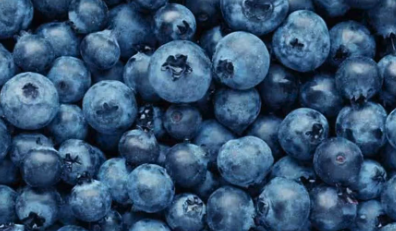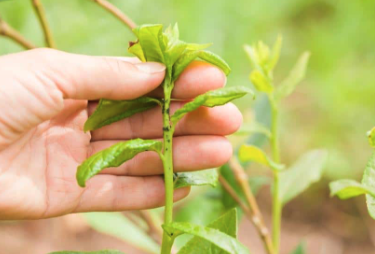Blueberries are a delightful addition to any garden, and in the lush climate of Western Washington, they thrive exceptionally well. With the right care and attention, you can enjoy a bountiful harvest of these nutrient-rich berries. Whether you’re a seasoned gardener or a beginner, here’s a comprehensive guide on how to care for and harvest your very own blueberry bush.
Last year, I took a trip to a gardener’s paradise – Flower World. It is a huge plant nursery with probably thousands of plants. I always find it a little dangerous to go there because I am so tempted to splurge on all the amazing plants. They obviously have a huge selection and a bonus – the plants are just right for our region. That visit resulted in me coming home with 10 too many plants. A lot more than the three blueberry bushes I went there to get.
I was amazed to see the sheer variety of blueberry bushes and not a little overwhelmed to choose the right one. So why not spread the good news of blueberry basics and help another overwhelmed gardener be empowered to make the right choice. Thus this Blueberry guide was borne.
Choosing the Right Blueberry Plant Variety – It’s hard to go wrong here.
Before you start your blueberry adventure, it’s crucial to select the right variety for your region. Western Washington’s climate, with its mild temperatures and ample rainfall, is ideal for both highbush and lowbush blueberries. If you want to get more technical, know that Western Washington is considered to be roughly in zone 8. So finding a variety that can tolerate that zone is perfect. Some popular highbush varieties are ‘Duke,’ ‘Bluecrop,’ and ‘Elliot.’ For lowbush varieties, consider ‘Top Hat’ or ‘Northblue.’
I always make sure to look for frost resistant varieties as well. The tags will say something like “hardy to 0*.” If you find that then you can rest assured that your precious blueberry bush will survive whatever the winter tries to throw at it. All that to say though, I have gotten away with planting varieties for much warmer and sunnier regions just fine. Having the blueberry bush’s cousin, huckleberries, growing around here is a good indication that the bush you choose is most likely thrive. I have certainly found that to be the case.
One of the best tips I ever received when it came to blueberry variety selection was choosing plants who’s fruit ripened throughout the summer. For example, get a variety that is ripe in early summer, during summer, late summer, and into fall. That way you will have fruit for the longest possible time. Not all your plants will be producing at once, but you will be harvesting from your blueberry orchard for far longer than if you had only one variety for all of your plants.

Planting a Blueberry Bush- Soil needs and other considerations.
Blueberries prefer acidic soil with a pH level between 4.0 and 5.5. Test your soil and amend it accordingly with organic matter such as pine bark or peat moss. Plant blueberry bushes in an area with well-draining soil and good air circulation. Ensure they receive full sun for at least six hours a day.
Spacing is vital to allow the bushes to grow and facilitate easy harvesting. Plus, any place that one bush touches another will not produce berries so make sure that no branches are touching other bushes. Plant highbush varieties around 4-6 feet apart, and lowbush varieties around 2-3 feet apart.
Watering and Fertilizing – Feeding your plants
Consistent moisture is key to blueberry success. While Western Washington is known for its ample rainfall, it’s essential to monitor soil moisture during dry spells. Provide 1 to 2 inches of water per week, especially during the growing season and as the berries develop. Make sure that your soil drains really well – we want well draining soil because blueberries do not like to be in stagnant water.
If you have soil that is heavy with clay or you notice that where you want to plant your bush seems to gather little pools of water, consider adding sticks and other organic material into the hole where your blueberry bush will be planted to ensure that your bush doesn’t get caught in a pooling section of your garden. Consider companion planting as well. There are plenty of plants that can boost your soils potential while helping mitigate drainage issues, with many more benefits besides.
Fertilize your blueberry bush in the spring with a balanced, slow-release fertilizer. Avoid over-fertilizing, as blueberries are sensitive to excess nutrients. They really are an easy plant to grow and tend since they do well in poor soil conditions. Consider using an organic, acid-forming fertilizer to maintain soil acidity. If you want to go all natural or don’t want to buy a fertilizer, I have had great success with mulching the area with pine needles and other evergreen debris, such as branches and sticks that have fallen from the trees around our house. This adds acidity and helps keep weeds at bay.
Pruning your Blueberry Bush – Cultivating life
Proper pruning encourages vigorous growth and helps maintain a healthy blueberry plant. Prune in late winter or early spring before new growth appears. Remove dead or damaged wood and thin out crowded branches to improve air circulation.
Harvesting Blueberries – enjoying your bounty!

Im sure we can all agree the actual harvesting is the best part of all the work and care you’ve put into these bushes. After all, it’s the reason you have these bushes in the first place! In Western Washington, blueberry plants typically produce fruit from late spring through late summer. Harvest when the berries are fully ripe, plump, and easily come off the bush with a gentle tug.
Ripe berries are so good straight of the bush but making a delicious blueberry pie or crumble is a mouthwatering benefit of having tons of free blueberries on hand. And rest assured, if you find yourself with too many blueberries to eat yourself, they freeze well, and alternatively your neighbors would undoubtedly enjoy a nice gift of homegrown blueberries!
Other harvesting considerations:
- Be gentle when harvesting to avoid damaging the bushes.
- It’s advisable to pick berries early in the morning when they are cool.
- Use a shallow container to prevent crushing the delicate berries.
Pest and Disease Management – longterm care for your blueberry bushes
Blueberries are relatively resistant to pests and diseases, but it’s essential to remain vigilant. Keep an eye out for common pests like aphids and mites. Neem oil or insecticidal soap can be effective organic solutions.


Protect your blueberry bushes from birds by using netting. I have had to do this and it works pretty well. Birds LOVE blueberries so keep an eye out for potential garden theives. Remember to always keep the area around the bushes clean to discourage potential disease vectors.
For more information you can check out this awesome guide!
